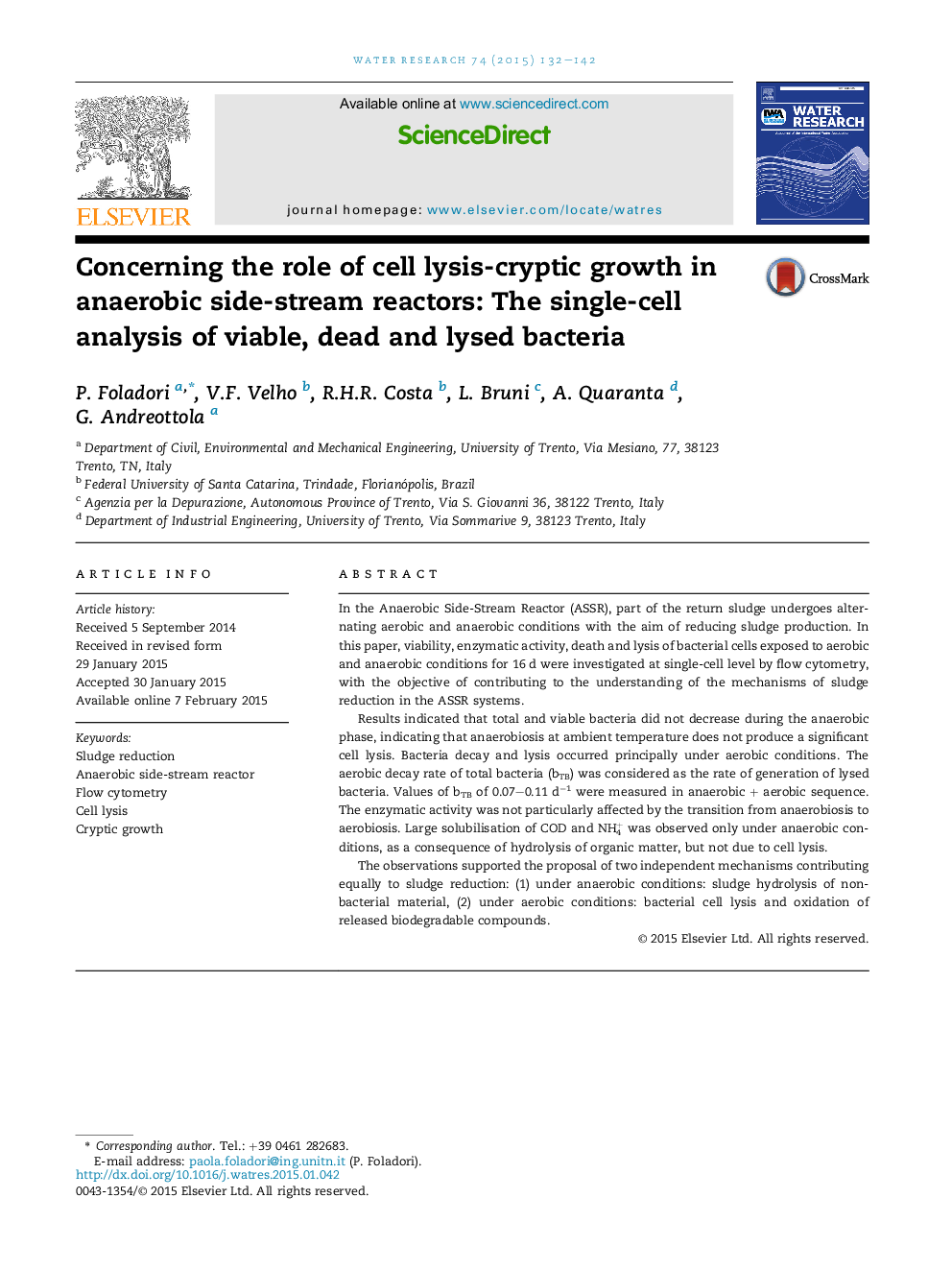| کد مقاله | کد نشریه | سال انتشار | مقاله انگلیسی | نسخه تمام متن |
|---|---|---|---|---|
| 4481271 | 1623094 | 2015 | 11 صفحه PDF | دانلود رایگان |
• Physiological cell status investigated in ASSR under aerobiosis/anaerobiosis.
• Anaerobiosis at ambient temperature does not produce a significant cell lysis.
• Passing from anaerobiosis to aerobiosis, cell lysis occurs under aerobiosis.
• Anaerobiosis favours hydrolysis and solubilisation of non-bacterial material.
• Mechanism of sludge reduction: anaerobic sludge hydrolysis + aerobic cell lysis.
In the Anaerobic Side-Stream Reactor (ASSR), part of the return sludge undergoes alternating aerobic and anaerobic conditions with the aim of reducing sludge production. In this paper, viability, enzymatic activity, death and lysis of bacterial cells exposed to aerobic and anaerobic conditions for 16 d were investigated at single-cell level by flow cytometry, with the objective of contributing to the understanding of the mechanisms of sludge reduction in the ASSR systems.Results indicated that total and viable bacteria did not decrease during the anaerobic phase, indicating that anaerobiosis at ambient temperature does not produce a significant cell lysis. Bacteria decay and lysis occurred principally under aerobic conditions. The aerobic decay rate of total bacteria (bTB) was considered as the rate of generation of lysed bacteria. Values of bTB of 0.07–0.11 d−1 were measured in anaerobic + aerobic sequence. The enzymatic activity was not particularly affected by the transition from anaerobiosis to aerobiosis. Large solubilisation of COD and NH4+ was observed only under anaerobic conditions, as a consequence of hydrolysis of organic matter, but not due to cell lysis.The observations supported the proposal of two independent mechanisms contributing equally to sludge reduction: (1) under anaerobic conditions: sludge hydrolysis of non-bacterial material, (2) under aerobic conditions: bacterial cell lysis and oxidation of released biodegradable compounds.
Figure optionsDownload high-quality image (226 K)Download as PowerPoint slide
Journal: Water Research - Volume 74, 1 May 2015, Pages 132–142
